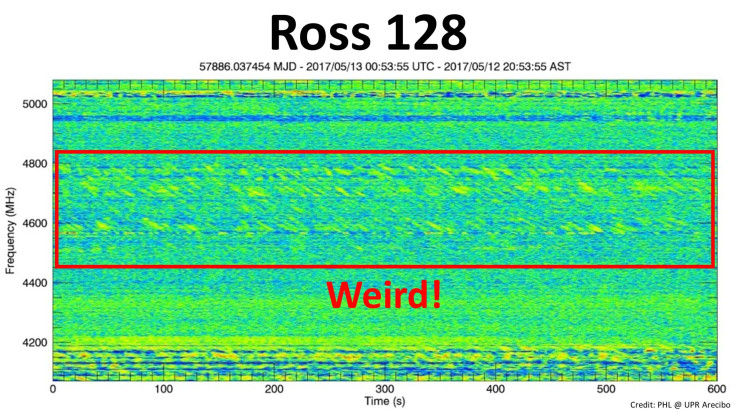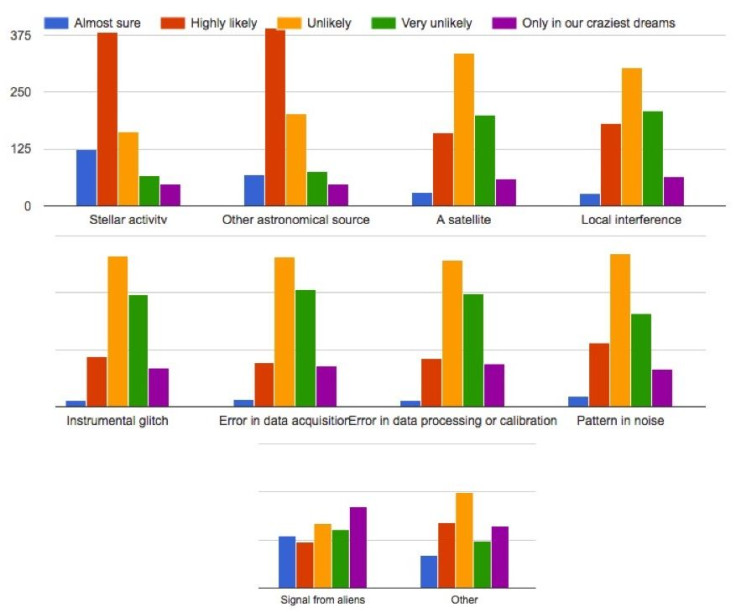Do Aliens Exist? Ross 128 Signals Not A Message From Intelligent Life

Scientists are solving the mystery of the strange signals their radio telescope recently picked up from a nearby star, and they are definitely not the work of aliens.
Excitement spread after the Arecibo Observatory in Puerto Rico detected semi-periodic pulses coming from Ross 128, a red dwarf that is only 11 light years from Earth. From the start, scientists emphasized that the signals could be explained by satellite interference or stellar emissions, although they did not completely rule out the tiny possibility that an intelligent extraterrestrial life form was trying to reach out to us. But after further research, the experts think they have pinpointed the signals’ origin, and it is probably not an alien society.
In a new post on the website of the Planetary Habitability Laboratory, which was using the observatory when the signals were detected, director Abel Méndez said the scientists have come up with the nickname “the Weird! Signal” and believe the source is “transmissions from one or more geostationary satellites.” He said they are “confident” about this answer.
Read: How Would Scientists Respond to a Message from Aliens?
“This explains why the signals were within the satellite’s frequencies and only appeared and persisted in Ross 128; the star is close to the celestial equator where many geostationary satellites are placed,” he wrote.
The group is still exploring how the satellites could have made transmissions that were distorted in the way they saw with the alleged Ross 128 signals.

The PHL pointed the telescope toward Ross 128 while observing a whole group of red dwarf stars — smaller, cooler and less luminous than our sun. The group is seeking to learn more about the activity of these stars, which are abundant in the universe and are considered solid candidates for systems that could host habitable planets, where alien life has the potential to exist. Many of the red dwarf stars the PHL studied have exoplanets orbiting them, but Ross 128 does not have any that scientists know of.
After picking up the strange signals, Arecibo reached out to the nonprofit Search for Extraterrestrial Intelligence, better known as SETI, for assistance in pinpointing their source. That group used the Allen Telescope Array near San Francisco and the Green Bank Telescope in West Virginia to get some more data.
The signals were broadband radio signals, as opposed to narrowband. That right there was a clue for SETI’s Seth Shostak, a senior astronomer. He told International Business Times that star emissions and other astronomical events will release broadband signals, whereas a narrowband one — on you “can only find it on one spot of the dial,” like a radio station — is not natural.
Read: Are Aliens Real? NASA Telescope Finds A Ton Of Planets, So Probably Yes
“That’s the hallmark of a transmitter,” he said.
Shostak explained that satellite interference is the most common source of an odd signal, partly because thousands of satellites orbit the Earth. Ross 128’s signals kept with that trend.
Still, Méndez noted that many people had been hoping it was a message from an intelligent alien life form. His group took a survey in which almost 800 people, more than 60 of whom were astronomers, chose what they thought would most likely explain the Ross 128 signals.
While most voted for stellar activity, another astronomical source or satellite interference, about 200 voted for a communication from intelligent extraterrestrials.

“These results reflect the still high expectations the public maintains on the possibility of contacting [extraterrestrial intelligence],” Méndez wrote. Although the scientists keep an open mind and explore all angles when they encounter a bizarre signal, “statistically, this is always the last consideration, not because such civilizations are impossible — we humans are an example — but because other possibilities had constantly occurred and no extraterrestrial civilizations have been detected yet.”
© Copyright IBTimes 2024. All rights reserved.





















